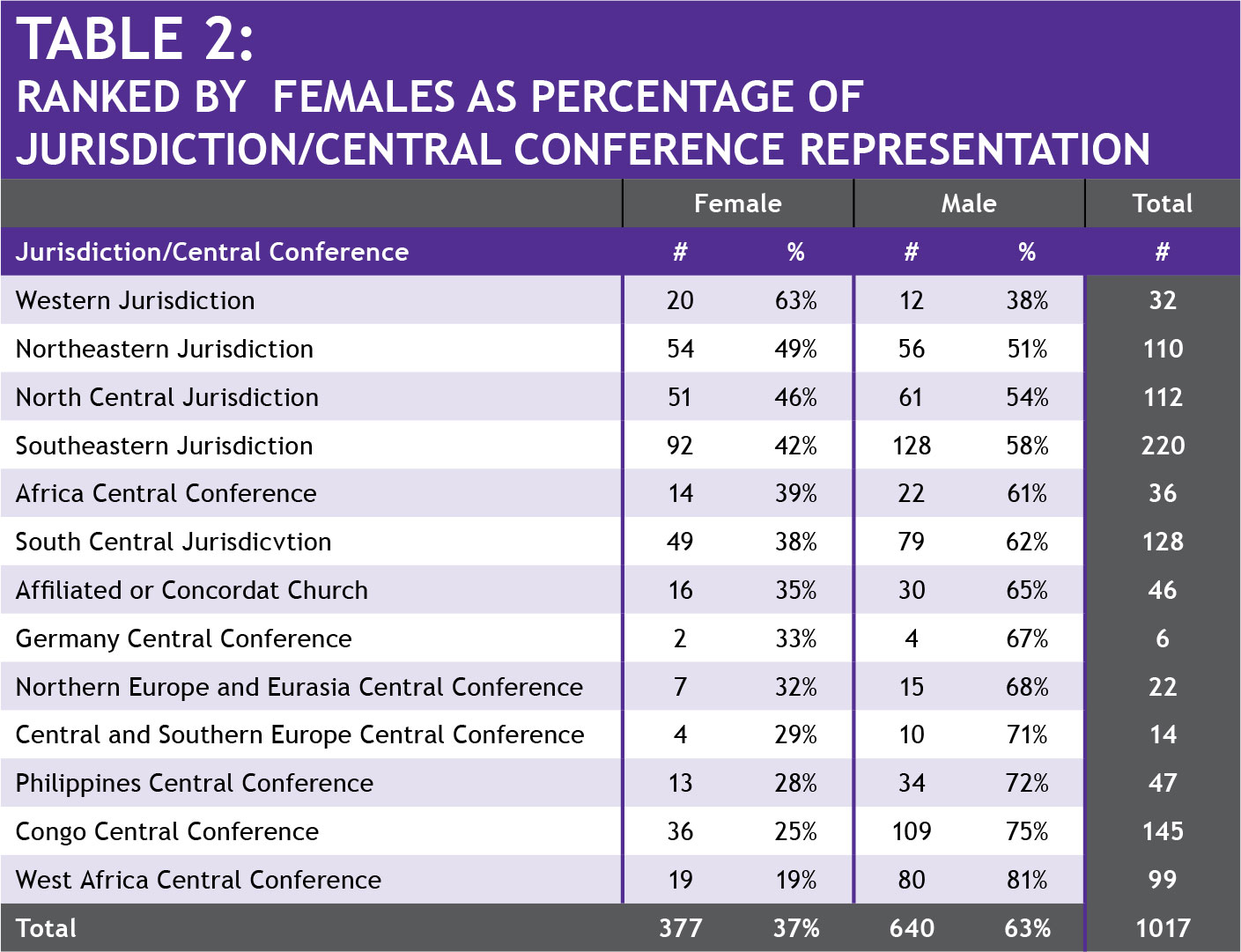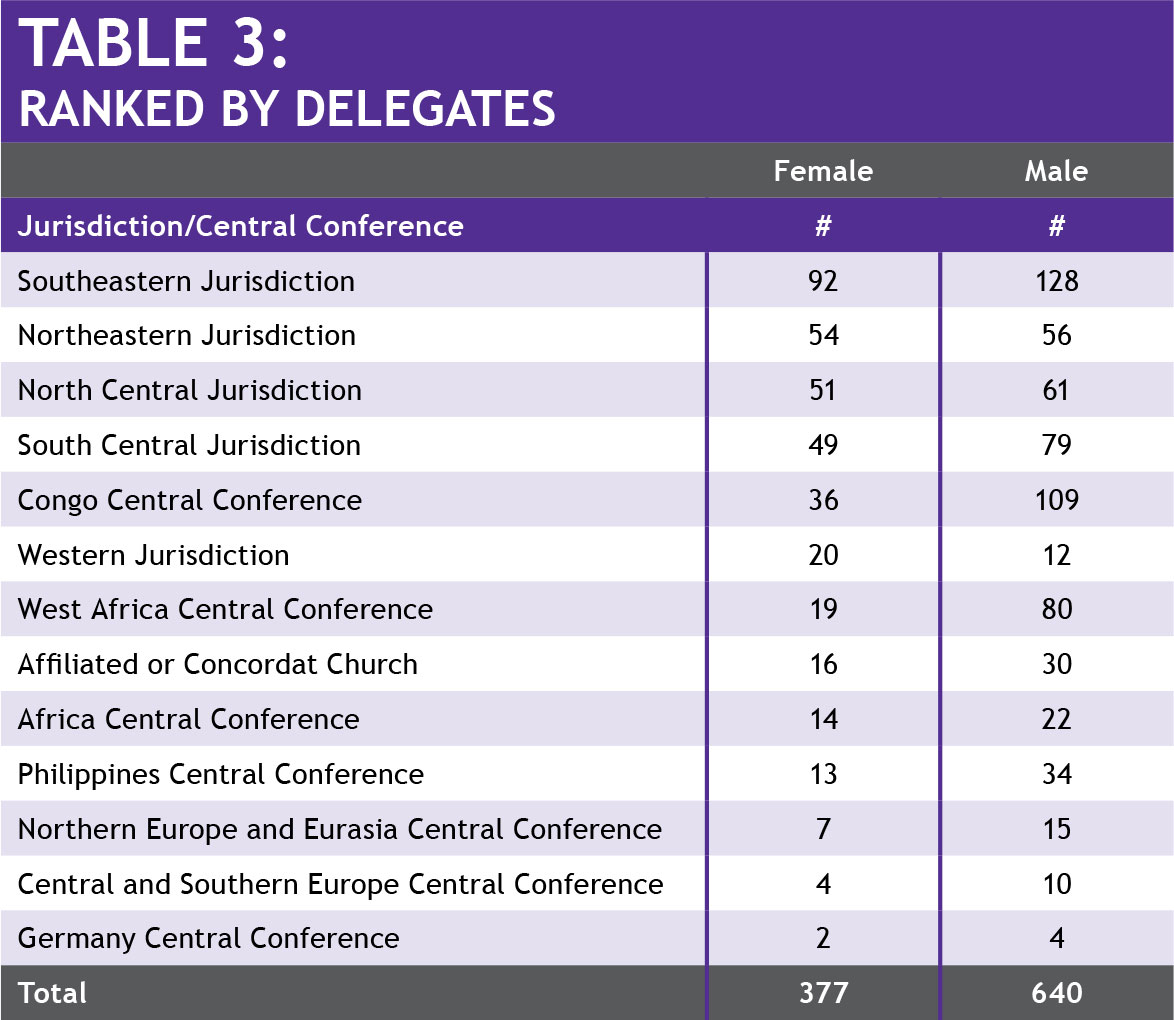Of the 1,017 delegates elected to the 2012 General Conference, 63% are male and 37% are female, according to the data supplied by the General Council on Finance and Administration1 (see Table 1). In comparison to the delegates elected to the 2008 General Conference, 60% were male and 40% were female. Women’s representation to General Conference is down by 3%.
There are 988 delegates who have voice and vote; 29 additional delegates—mainly from affiliated Methodist bodies—have voice. These additional delegates may speak and influence legislative committees as well as plenary sessions. This article and the statistics used herein include all 1,017 delegates because they all have the ability to speak at General Conference. (The next issue of The Flyer will examine the 988 voting.)

In the 2008 General Conference, U.S. delegates made up 76% of the U.S. delegates and women were 44% of the delegation. Central conferences (from United Methodist annual conferences outside the United States) were 24% of the delegates and women were 28% of those delegates. In the 2012 General Conference, U.S. delegates make up 59% (-17% from 2008) of the delegates and women are 44% of the delegation (same as in 2008). Central conferences make up 41% of the 2012 General Conference delegation (+17% from 2008) and 29% of those delegates are women (increase of 1%).
While 37% is the overall representation, the U.S. jurisdictions have 44% female representation and the central conferences have 28% female representation (see Table 2). Representation of women has risen steadily over the last 40 years (in 1972, only 13% of General Conference delegates were women).
It is no surprise then that 266 of the 377 female delegates (70%) are from the United States, largely because the United States has more delegates, but also because gender-justice work has not been a priority among many central conferences. At least one annual conference outside the United States has yet to ordain a single woman.

Clergywomen and Laywomen
Women represent more than half of United Methodist membership around the world, but only about 19% of all clergy. While women, lay and clergy, represent 37% of General Conference delegates, clergywomen have the lowest percentage of representation at 14% of General Conference delegates (see Table 1). In terms of sheer numbers, there are more clergymen (175) from the central conferences than there are clergywomen (146) from the U.S. jurisdictions and the central conferences combined (see Table 2). The same is true for clergymen (184) from the U.S. jurisdictions and the clergywomen (146) combined.
Laywomen have the second lowest percentage of representation at 23% or 231 delegates (see Table 1). The 149 laywomen elected from the U.S. jurisdictions constitute 65% of the laywomen representation. There are more laywomen delegates from the U.S. than there are central conference women (111) combined (lay and clergy). Likewise, there are more U.S. laywomen (149) than central conference laymen (129). It is also interesting to note that while U.S. laywomen (149) and laymen (152) are nearly even in total numbers, the central conference laymen outnumber the laywomen 129 to 82.

Jurisdictions Ranked by Number of Women
Of U.S. regions, the Western Jurisdiction has the least delegates but the highest percentage of women delegates (63% of that region’s total elected delegates are women), followed by Northeastern (49%), North Central (46%), Southeastern (42%), Africa Central Conference (39%) and South Central (38%) (see Table 2). The Congo Central Conference has the highest number of women delegates among central conferences (36 of 145 delegates are women). However, women comprise 25% of the total delegates from Congo, which makes the Congo Central Conference second to last when ranking female delegates as a percentage of a region’s total elected delegation (see Table 2). Numerically, the Southeastern Jurisdiction has the largest number of women delegates (92), followed by Northeastern (54), North Central (51), South Central (49) and Congo Central Conference (26) (see Table 3).
